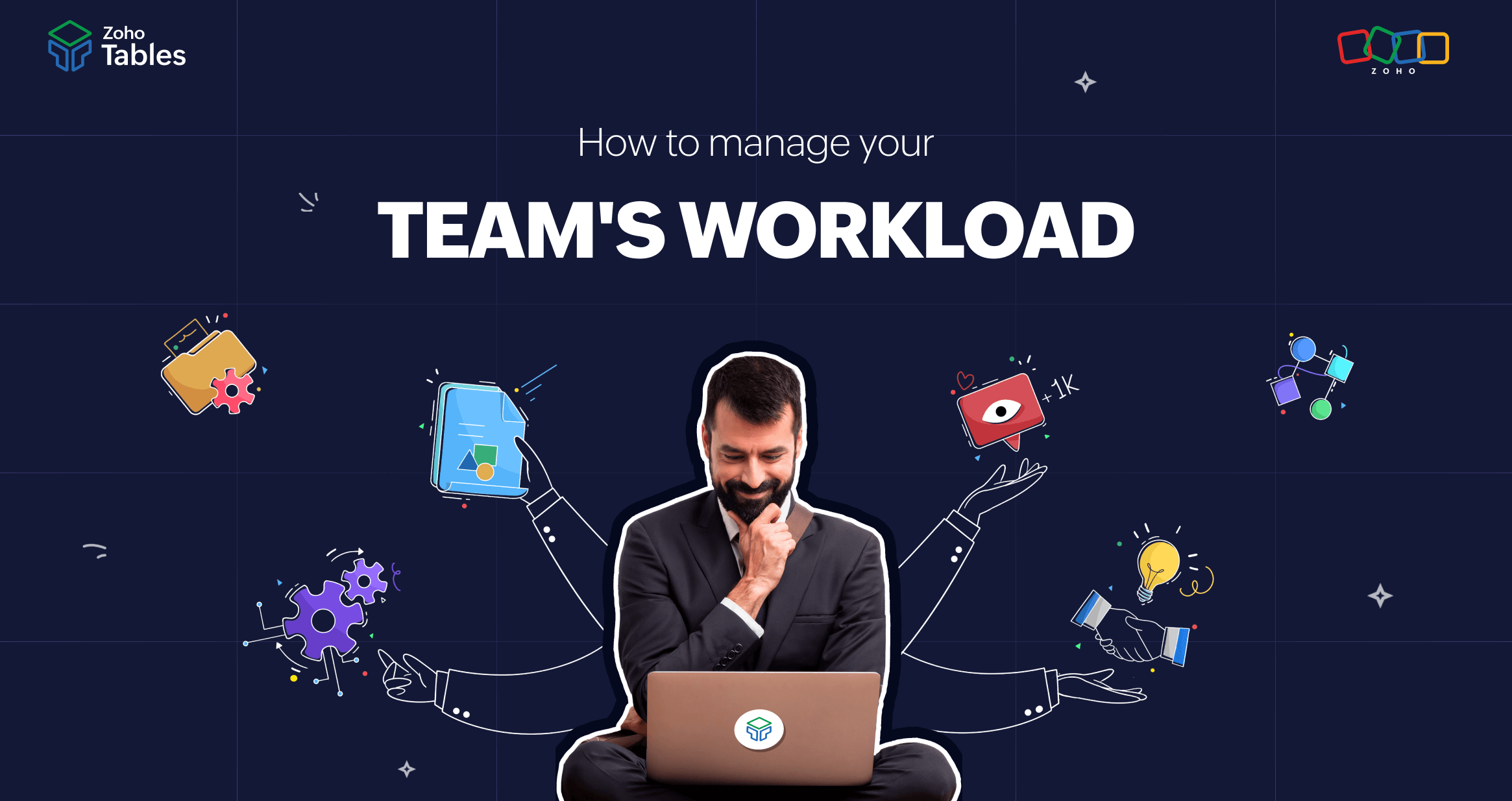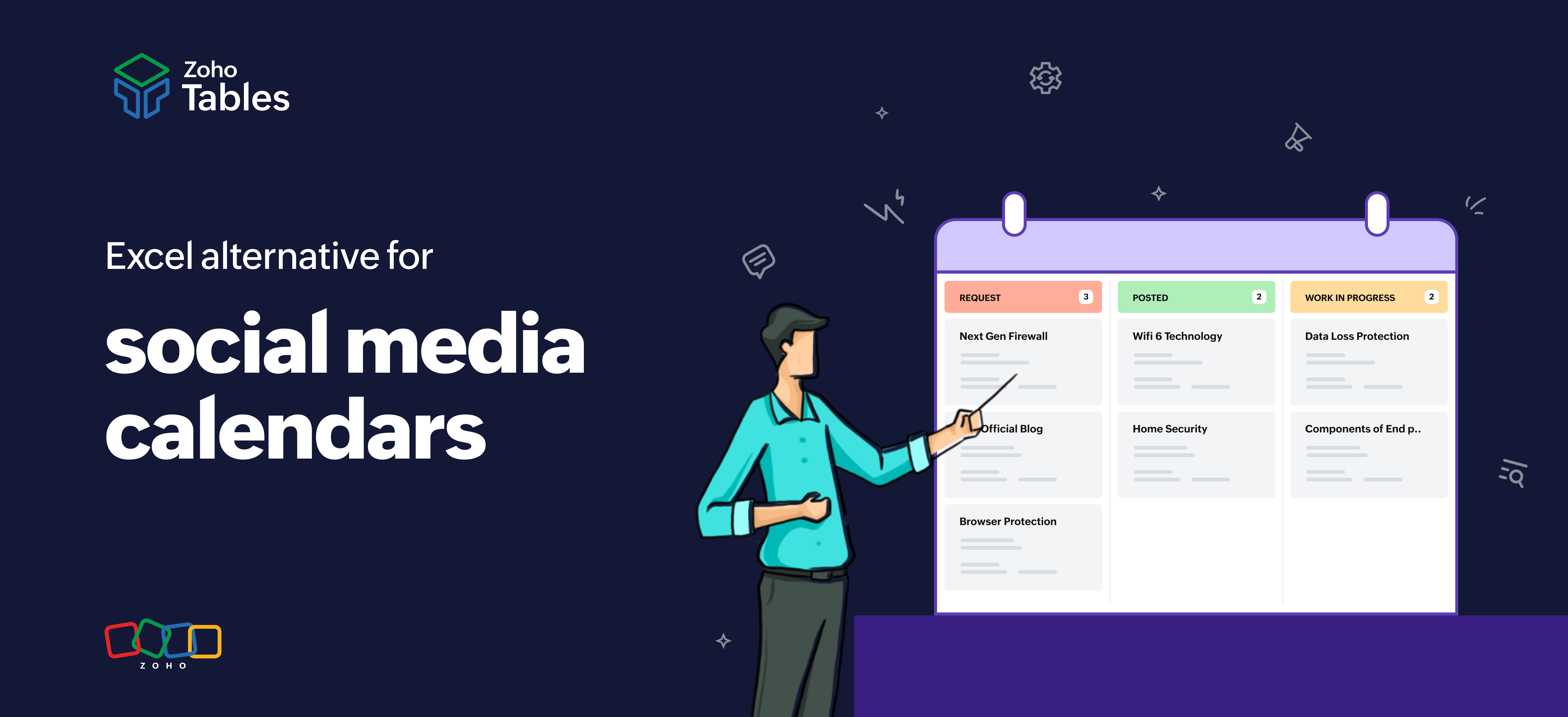- HOME
- Work Management
- How to manage your team's workload
How to manage your team's workload
- Last Updated : November 21, 2024
- 300 Views
- 5 Min Read

Your team members' competence is not the only factor for your team's success; how effectively you distribute work among them also plays a vital role. Proper workload management is key to unlocking your team’s potential. It ensures smooth progress while maintaining a stress-free work environment. But it goes beyond simply handing out tasks. It’s about finding the right balance, assigning tasks based on individual strengths, and keeping the team aligned with the overall project goals.
Let's explore the importance of workload management, its benefits, and practical steps to achieve it.
What is a workload?
Simply put, "workload" refers to the amount of work that needs to be completed within a specific timeframe. When applied to a team, it encompasses the tasks assigned to individual team members. Typically, a project manager or team lead is responsible for distributing these tasks.
What is workload management?
Workload management is the process of breaking down larger project goals into manageable tasks and organizing, distributing, and monitoring them to ensure work completion without overwhelming any individual.
It’s a critical aspect of project management that directly impacts both team performance and overall project success.
To do this effectively, a project manager or team lead must have a clear understanding of the team’s objectives, individual capabilities, and the resources available. Check out our comprehensive guide to learn more about project tracking.
Why is workload management critical for any team?
Without proper workload distribution, your team may face several challenges, including:
Inefficiencies: Poor workload management leads to wasted time and reduced productivity.
Decline in work quality: Stressed or overworked team members may produce subpar work due to fatigue or lack of focus.
Reduced innovation: An overwhelmed team has little time for creative problem-solving or innovation.
Low morale and high stress levels: Overworked team members feel burned out and unmotivated.
Frequent turnover: A stressful work environment drives talent away, creating a cycle of constant hiring.
Lack of collaboration: Overloaded teams may struggle to collaborate effectively.
Missed deadlines: Ineffective workload distribution often leads to delayed project timelines.
Poor customer satisfaction: Inconsistent performance and missed expectations can lead to unhappy clients.
Steps involved in workload management
While every team or project manager may have their own approach, there are steps that can guide you toward a successful workload management strategy. To simplify the process, we’ve created a checklist that covers the crucial factors.
1. Understanding your team’s capabilities
Before assigning any tasks, it’s important to have a clear understanding of your team members' strengths, weaknesses, and workloads. This helps ensure that tasks are distributed in a way that aligns with their skills and capacity.
2. Breaking down the work into actionable tasks
Large goals should be split into smaller, manageable tasks. These tasks should be specific, clear, and actionable, making it easier for team members to stay focused and make consistent progress.
3. Assigning tasks and clear communication
Task assignment isn’t just about delegation; it’s about ensuring that each team member knows what’s expected of them. Clear communication of objectives, deadlines, and priorities is essential to avoid confusion and delays.
4. Continuous monitoring and workload management
Once tasks are assigned, regular monitoring is necessary to ensure that progress is being made. Adjustments may be needed if certain team members are overloaded or if unexpected challenges arise. Keeping a pulse on the team's workload helps maintain balance and prevent burnout.
5. Utilizing a work management tool
Using a work management tool can streamline the entire process by allowing you to manage every step in one place. These tools offer clear visibility into task distribution, timelines, and overall progress, making workload management more efficient and less time-consuming.
While adhering to these steps, project managers can guarantee smooth project progression, there are specific pitfalls that project managers should steer clear of as well.
Overloading top performers: Distribute tasks evenly across the team to prevent over-reliance on high-performing members. Constantly assigning the bulk of work to top performers can reduce their motivation.
Neglecting task dependencies: Ensure that all task dependencies are clearly identified and considered. This helps maintain a smooth workflow, ensuring one team member’s progress doesn’t block another’s.
Micromanagement: Monitor progress without hovering over every detail. Excessive oversight can erode trust and lower team morale. Provide guidance, but allow team members the autonomy to manage their own tasks.
Workload management with Zoho Tables
Zoho Tables is an easy-to-use work management tool designed to handle everything from task planning to execution. With features to streamline task assignment, you can ensure each task reaches the right person at the right time. Here's how:
Gain full visibility into your team’s workload
With Zoho Tables, you can easily break down projects into manageable tasks, assign them to team members, and instantly see who's handling what. With a quick glance, you’ll know if work is distributed fairly or if anyone’s overloaded, so you can keep your team balanced and on track.
Custom workflows for any team structure
Whether you’re leading a small team or managing a large department, Zoho Tables seamlessly adapts to your workflow—no need for your team to change its working style. Assign tasks based on each team member’s strengths and set up clear SLAs so everyone follows a defined process without the guesswork.
Set priorities and deadlines
Assign priorities and set realistic deadlines with ease, so everyone knows exactly what needs to be done and when. Automate repetitive tasks, allowing you to focus on meaningful work. For instance, you can set up automatic email reminders for tasks that are overdue, ensuring your team stays on track.
Monitor progress in real time
Skip constant check-ins and reduce unnecessary meetings. With Zoho Tables, all your work data is in one place, allowing you to monitor team progress in real-time, identify bottlenecks early, and make proactive adjustments to prevent issues before they escalate.
Built-in collaboration and communication
Keep your team aligned with built-in communication tools. From comments on tasks to notifications for updates, everyone stays informed and on the same page.
Get started with Zoho Tables
Take control of your team’s workload with Zoho Tables. Whether you're managing a small project or overseeing a large team, with our platform, you can transform the way you manage work. Optimize your workload management process today!
 Haripriya S
Haripriya SDeveloper turned marketer. Balancing parenting and marketing, and loving every bit of it.


